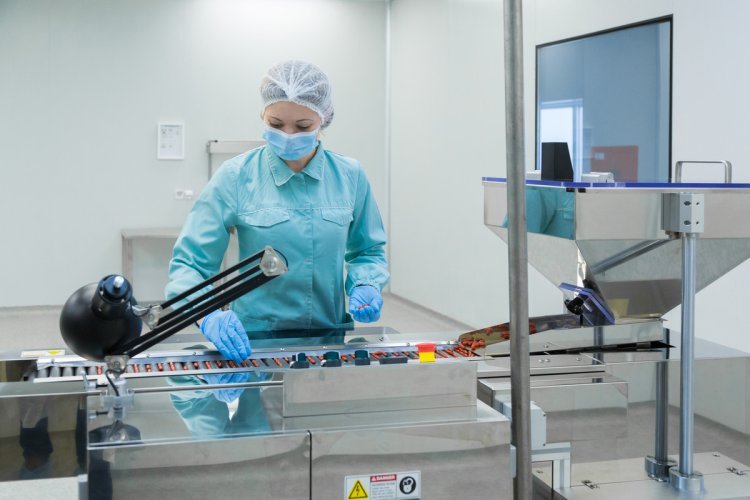Your Guide to Selecting Materials for Plastic Overmolding Projects
Selecting the right materials for plastic overmolding requires a thoughtful consideration of many factors including mechanical, chemical, and thermal properties, as well as design and processing parameters.

Plastic overmolding or co-molding, is a two-shot injection molding process where a thermoplastic material is molded over another material to create a single part. Typically used to add soft-touch surfaces on hard plastics or to create multi-material assemblies, this procedure can enhance the product's attributes, such as aesthetics, ergonomics, and functionality.
Selecting Base Material
The choice of base material has a considerable impact on the quality and effectiveness of the completed overmolded component. Common substrate materials include polycarbonate (PC), polyamide (PA), ABS (Acrylonitrile Butadiene Styrene), and PBT (Polybutylene Terephthalate). When selecting a good substrate, numerous vital features like mechanical strength, thermal resistance, and chemical compatibility must be considered, since they are critical in ensuring the end product's best performance and lifetime.
Tips for Selecting Substrate
Mechanical Properties
Assess the load and stress the product will endure. Materials such as PA and ABS offer good strength and toughness.
Thermal Properties
Examine the operating temperature range. For high-temperature applications, PC or PBT could be ideal.
Chemical Resistance
Check for potential exposure to chemicals or solvents. Polyamides generally provide good chemical resistance.
Choosing Overmolding Material
The chosen material for the co-molding operation should not only demonstrate superior adherence to the substrate but also meet essential performance standards such as flexibility, texture, and color retention. Commonly utilized materials for overmolding comprise TPE (Thermoplastic Elastomers), TPU (Thermoplastic Polyurethane), and Silicone, each providing unique properties that enhance the durability and visual quality of the final item. These characteristics are crucial in ensuring that the overmolded component functions effectively under diverse environmental conditions and retains its designed appearance throughout its usage.
Tips for Selecting Overmolding Material
Adhesion
This means ensuring a strong bond between the overmolding material and the substrate. Depending on the particular materials involved, the implementation of pre-treatment processes or the use of bonding agents might be necessary to improve adhesion. Such preparatory measures are vital for fostering a durable connection between the two materials, thus ensuring the structural integrity and extended lifespan of the end product.
Flexibility and Hardness
Based on the application's specific requirements, it is critical to select a material with the suitable degree of flexibility. Both TPEs and TPUs are excellent possibilities since they come in a variety of hardness levels evaluated on the Shore scale. This measurement scale aids in precise material selection, ensuring the necessary flexibility for the optimal performance and functioning of the final product.
Durability
This consideration encompasses environmental exposure elements like UV rays, moisture, and abrasion, which can greatly impact the performance of materials. Silicone, in particular, is noted for its superior UV resistance and its capacity to remain flexible over a wide range of temperatures. These characteristics render it an excellent option for applications that demand high durability and consistent performance under demanding environmental conditions.
Compatibility Between Materials
A significant challenge in overmolding involves ensuring the compatibility of the two materials involved. Material compatibility heavily impacts the adhesion quality and overall structural robustness of the end product. The compatibility is determined by factors such as the chemical properties of the materials, their thermal expansion coefficients, and the temperatures employed during their processing. It is crucial to grasp these elements to successfully engineer a product that demonstrates dependable functionality and long-lasting durability throughout its useful life.
Testing for Compatibility:
Adhesion Testing
Conduct lab tests to evaluate the bond strength between the two materials.
Thermal Testing
Assess the impact of different temperatures on the bond integrity during and after processing.
Chemical Tests
Check how different environmental factors affect the materials when they are bonded.
Design Considerations
Design is fundamentally important in the successful culmination of an overmolding project. Careful and accurate design efforts substantially diminish stress concentrations, lessen instances of warping, and greatly improve the overall aesthetics and attractiveness of the component. Diligent planning and precise execution of these design parameters are essential to achieve superior performance and satisfaction in the finished product, thereby ensuring its optimal functionality and aesthetic excellence.
Key Design Tips:
Mold Design
Ensure that the mold design allows for proper flow and bonding of the overmold material. Pay attention to gate location and mold temperatures.
Part Geometry
Consider overmold thickness, which should not be too thin to cause poor adhesion or too thick to cause warping or sink marks.
Prototyping
Employ rapid prototyping techniques to test designs before going into full production to identify potential issues early in the development process.
Key Takeaways
Selecting the right materials for plastic overmolding requires a thoughtful consideration of many factors including mechanical, chemical, and thermal properties, as well as design and processing parameters. Through proper understanding and carefully planning based on these factors, you can significantly improve the success rate of your plastic overmolding projects.
By utilizing the detailed guide provided above, engineers and designers are well-prepared to make well-informed decisions that skillfully balance performance demands with cost-effectiveness, ultimately resulting in improved product results in overmolding projects. This methodical approach promotes a thorough assessment of both material and design options, guaranteeing that each choice made significantly supports the overall success and financial feasibility of the project.
What's Your Reaction?










![Wireless Connectivity Software Market Size, Share | Statistics [2032]](https://handyclassified.com/uploads/images/202404/image_100x75_661f3be896033.jpg)




